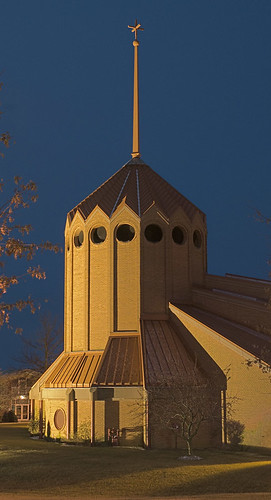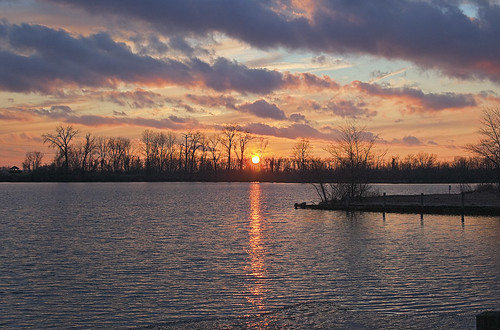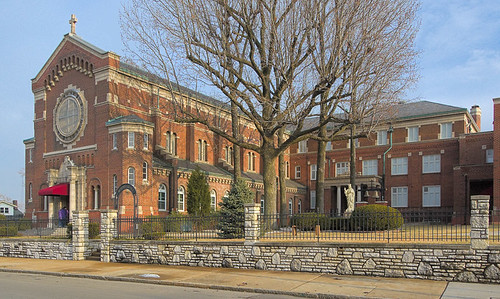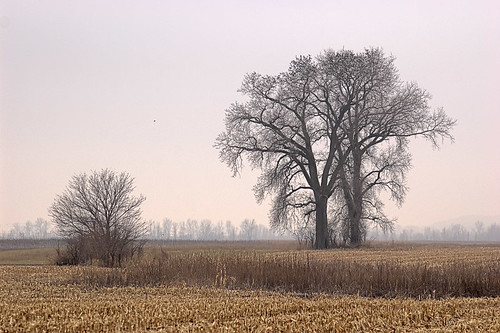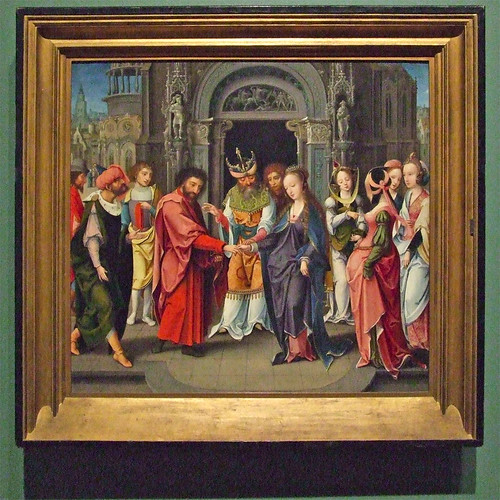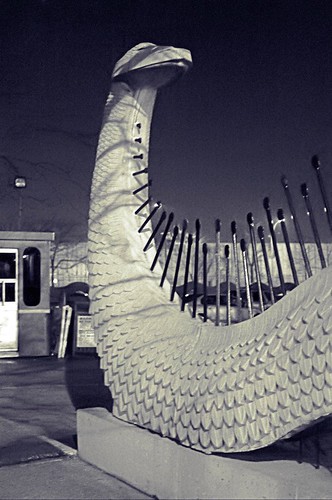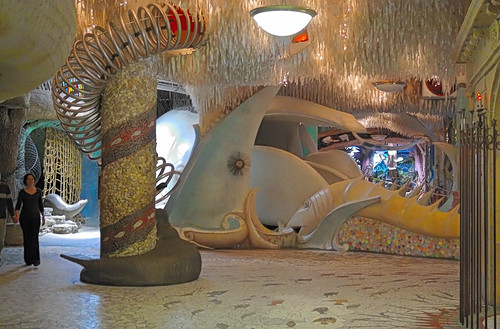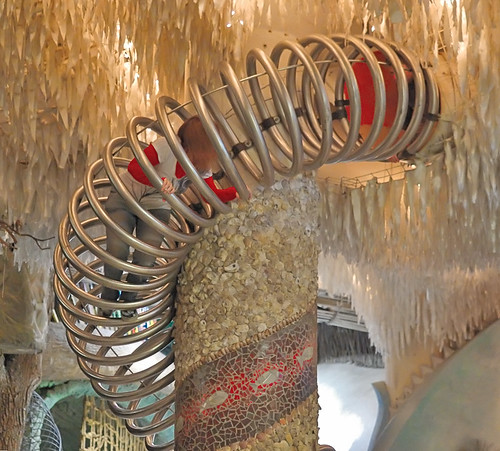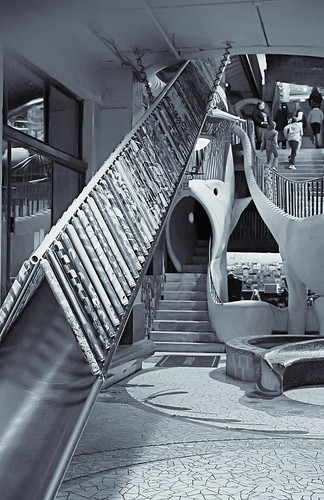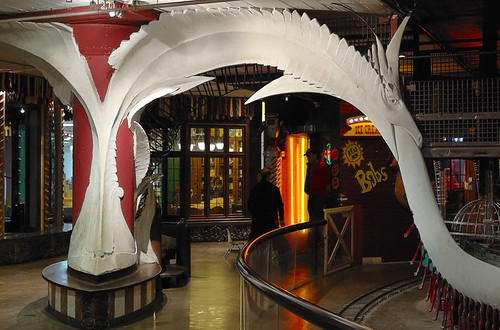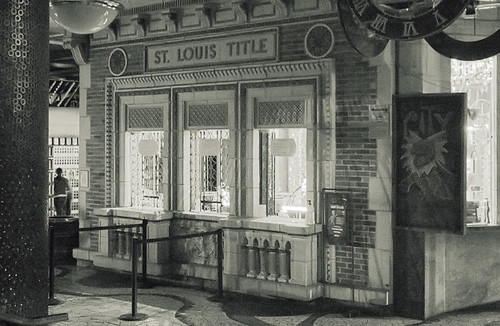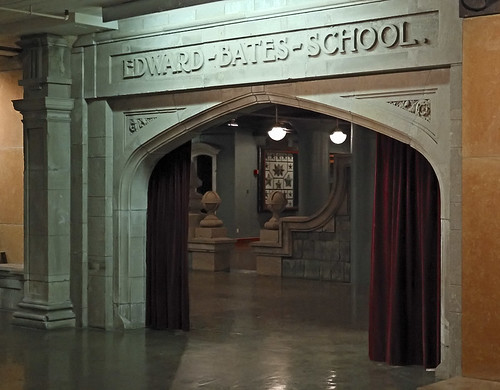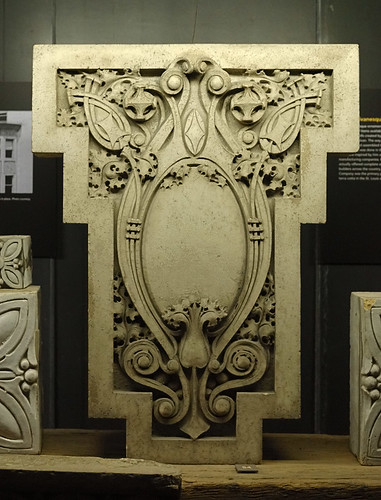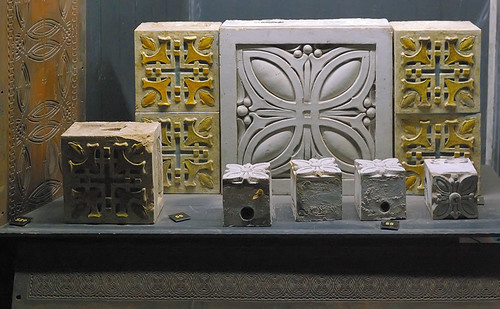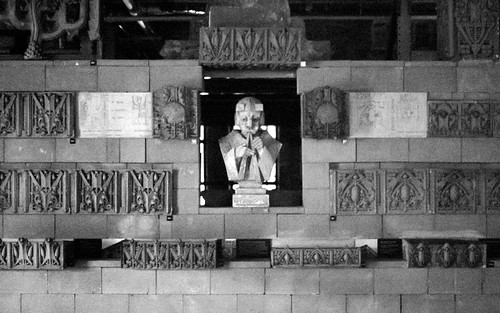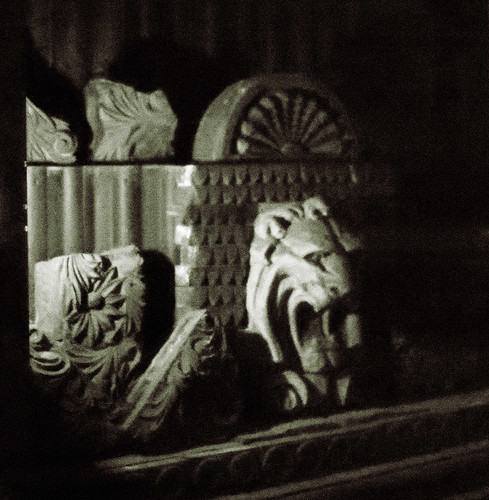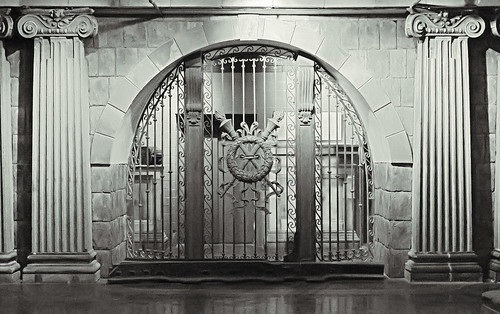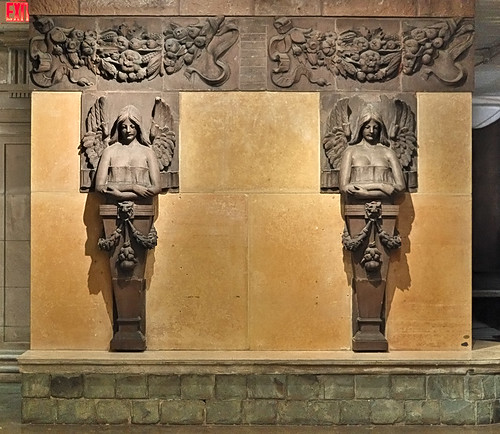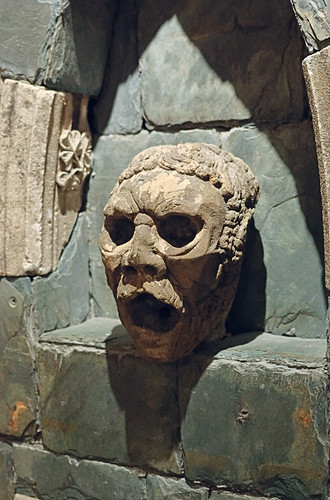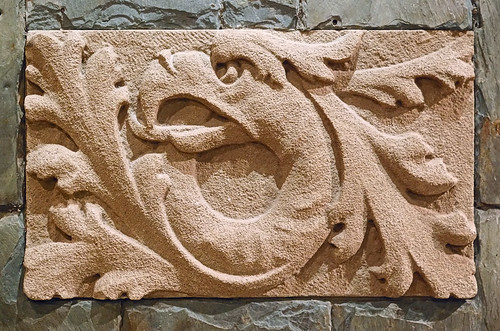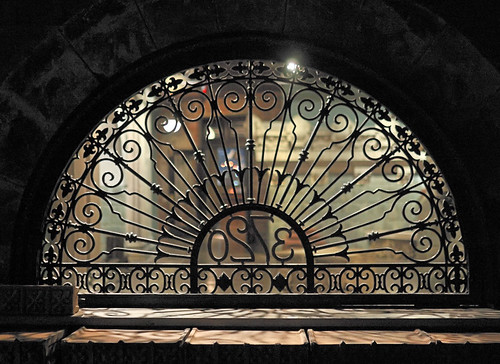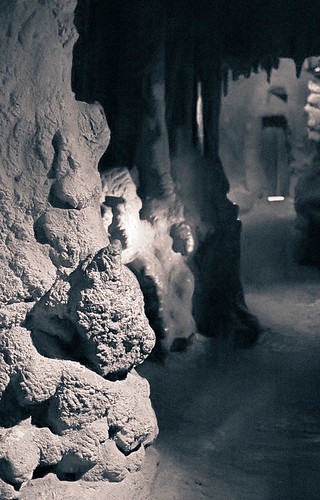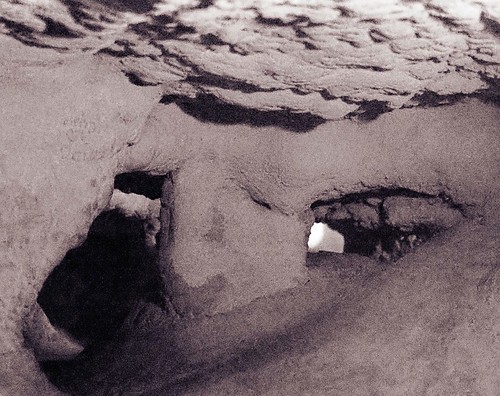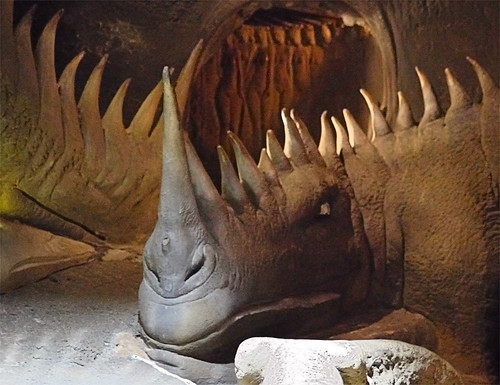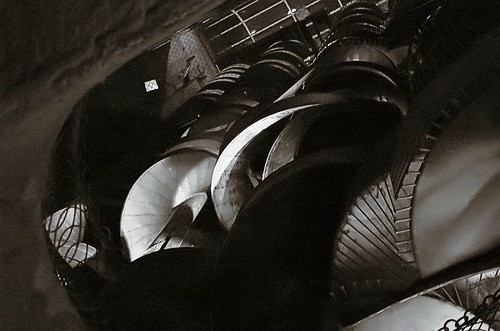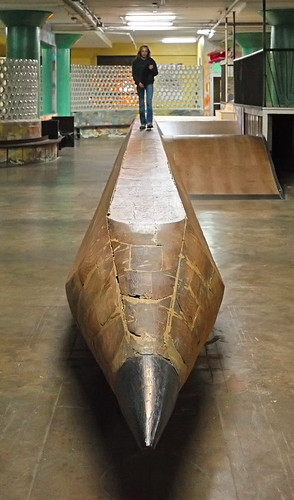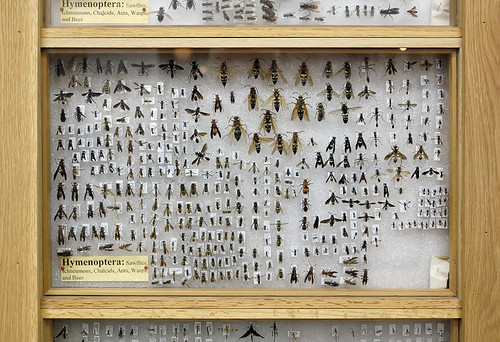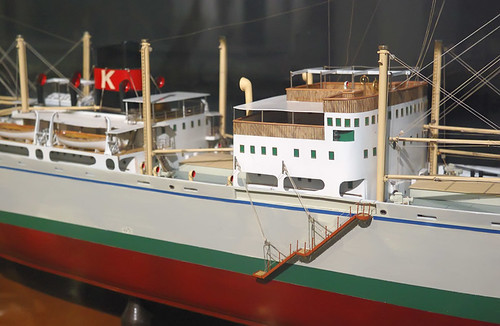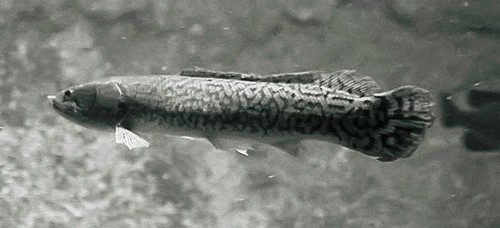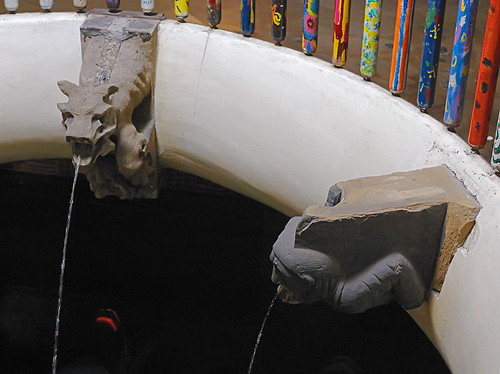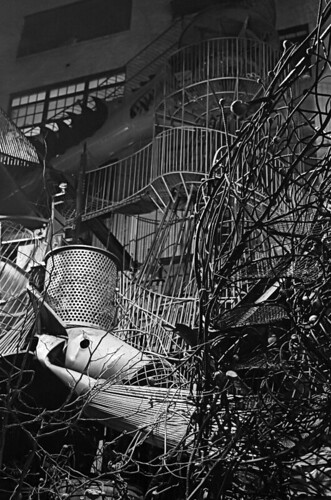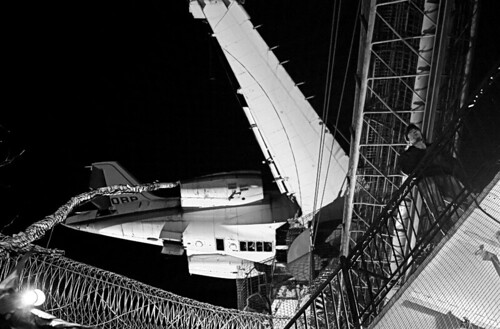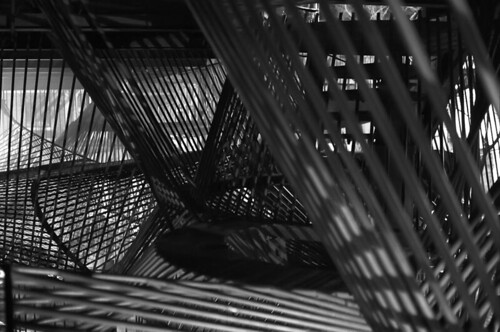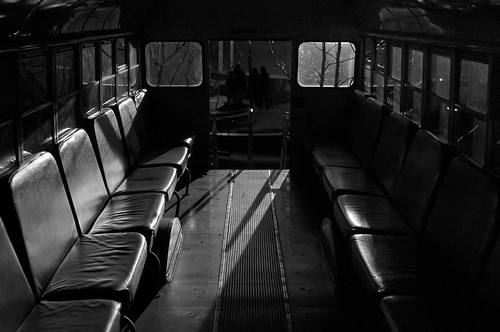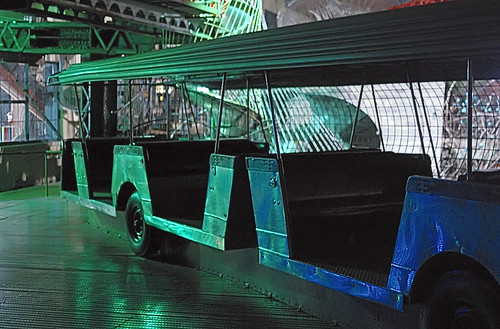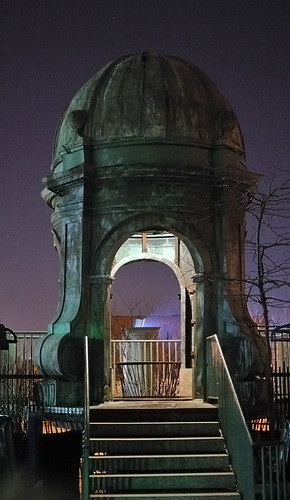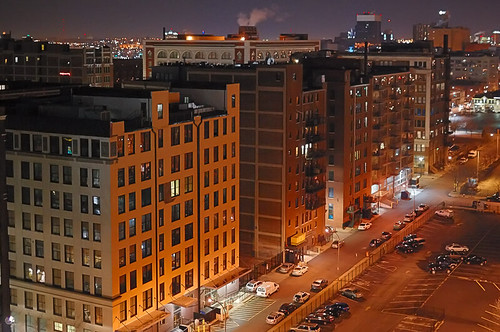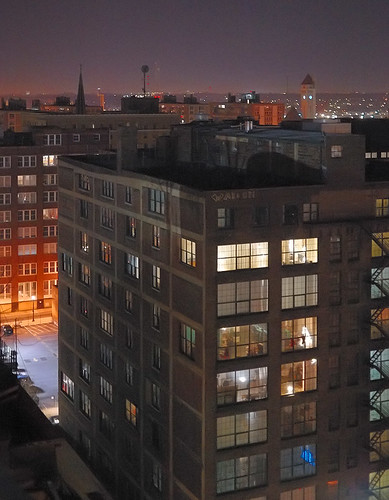HERE ARE PHOTOS of the
Cathedral Basilica of Saint Louis, the episcopal church for the Latin Rite
Archdiocese of Saint Louis. This is the grandest church in the region of Saint Louis, Missouri, and is one of the finest cathedrals in the United States. This church is a frequent subject on this website, but it has been some years since I've taken a lot of photos here.
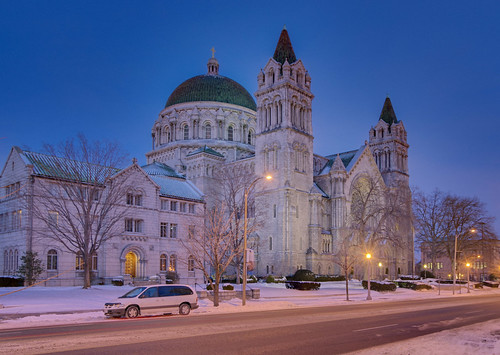
These photos were taken on January 8
th. The church has a Romanesque exterior, Renaissance dome, and the interior has Byzantine mosaics inspired by Saint Mark's in Venice, as well as Italian mosaics and some Art Deco detail.
Plans for building a cathedral on this site began with Archbishop Kain in the late 19
th century. The old Cathedral located near the riverfront in downtown Saint Louis is a fine church, but it was located in what was then a dangerous warehouse district — and for this reason another church, Saint John Apostle and Evangelist, was used as a pro-Cathedral. With industrialization following the Civil War, the population was moving out of downtown, and a new Cathedral was needed.
Archbishop John J. Glennon announced the new Cathedral in 1905, and needed to raise funds of the amount of one million dollars to begin construction. Groundbreaking started in 1907, the cornerstone was laid in 1908, and the first Mass was held here on October 18
th 1914. The cathedral was consecrated on June 29
th 1926, on the centennial of the creation of the Diocese. The cathedral was not finished until 1988, with the completion of the mosaics in the transepts. More history from the Cathedral's website is
here.
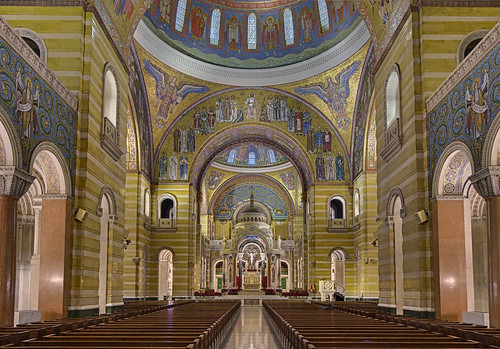
I frequently attend Mass here, but I must admit that I often don't notice the mosaics high up in the church. When I'm just looking forward, I see the plain wood pews and the yellow stone walls. Bringing a camera along helps me see things in a new way — and looking at the final photos reveal detail I've hardly noticed before.
The purpose of a church is not merely a meeting place for the brethren. It ought to be a place suitable for — and dedicated to — the liturgy and for public and private devotion. Also, it ought to both instruct and inspire the faithful, and as an icon, provide a foretaste of things to come. The beauty and harmony of a church also provides repose in the spirit. The great expense of such a structure is usually a small part of a diocesan budget, and God willing, will be used over centuries.
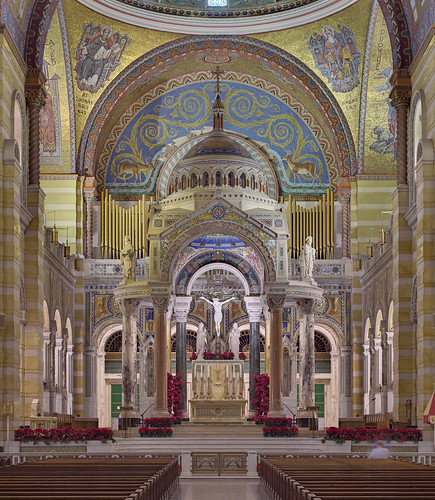
The Gothic Revival of the 19
th had noble aspirations to good effect, but sometimes the results of that movement were churches that produced nice
feelings but were often not logically designed — although this logic was indeed the case with the original Gothic style. The later Liturgical Movement was a reaction to this, and attempted to bring intellectual order to liturgical art and architecture.
The sanctuary of the Cathedral Basilica was designed to emphasize the altar and crucifix as the focal points, and the art around the sanctuary symbolically reinforces the liturgy.

The
Umbraculum,
ombrellino, pavilion, or umbrella, signifies that this is a minor basilica, having achieved that status in 1997. It is adorned with Papal symbols, as this honor is bestowed by the Pope.
In the background is the Archbishop's
cathedra, or chair. The presence of a bishop's
cathedra is what makes a church a
cathedral.
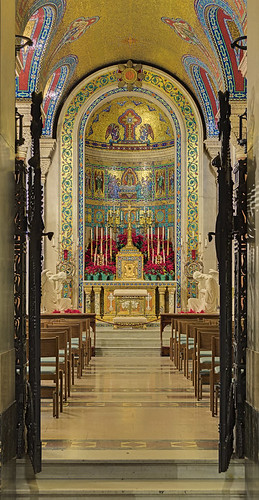
Blessed Sacrament Chapel. While having the tabernacle centered along the axis of the altar and crucifix is fitting for a parish church, a great cathedral or shrine often has lots of tourists and a separate chapel for adoration is appropriate.
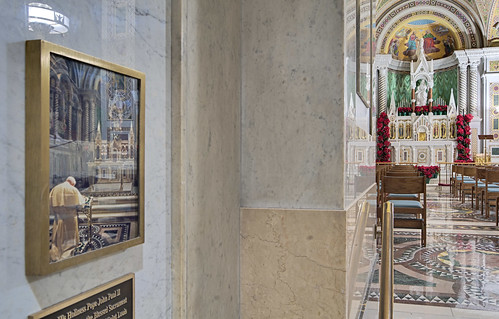
Next to Our Lady's Chapel is a photograph of Pope John Paul II praying in that chapel, in January of 1999.
The lighting in the Cathedral is dim, yellowish, and irregular, and so most snapshots taken here tend to be disappointing, and do not adequately portray the color and detail found here. Because of this problem, I processed my photos here
as if the church were brightly lit by uniform white lighting. I have recently color-calibrated my camera, so these photos should be at least somewhat more accurate than previous ones.
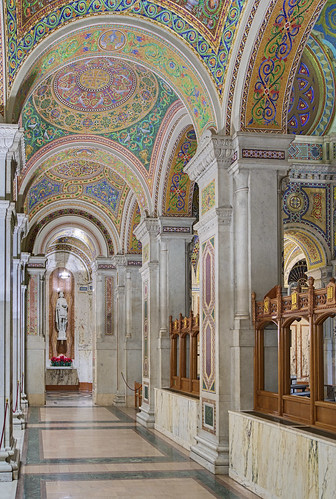
Ambulatory between the Our Lady's Chapel and the sanctuary features Italian style mosaics on the ceiling.
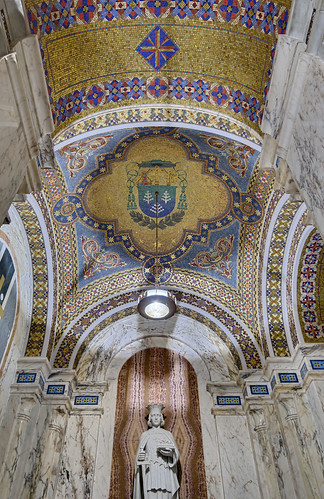
In the ambulatory is this statue of Saint Louis IX, King of France and patron of the Archdiocese; above is the episcopal arms of Bishop du Bourg.
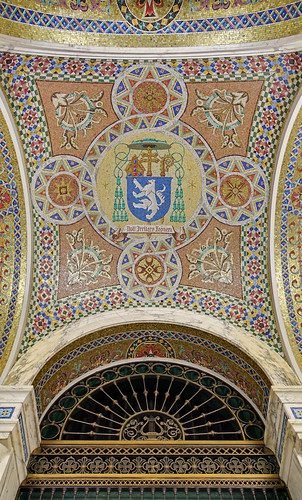
The arms of Archbishop Kenrick. His motto was
Noli irritare leonem — ‘do not irritate the lion’.
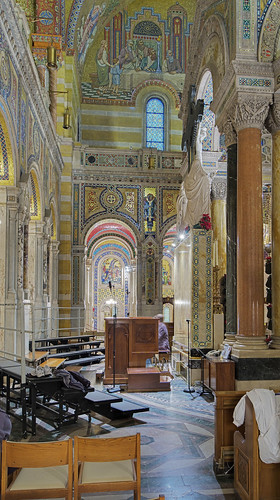
The organ console and choir reside unseen behind the high altar. An organist practicing.
Mosaics of angels surround the sanctuary, reflecting the Heavenly liturgy; up above is a scene from the Old Testament, which acts as a type or prefigurement of the Eucharist.
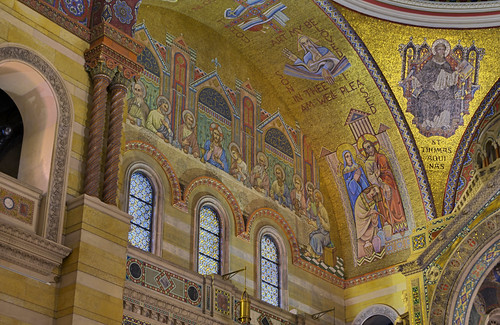
Opposite, above the west side of the sanctuary, is a depiction of the Last Supper.
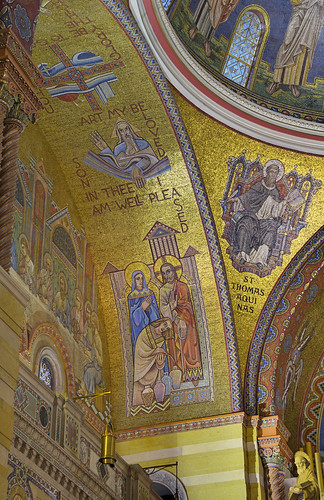
A closer view of the arch surrounding the Last Supper. The pendentive shows Saint Thomas Aquinas.
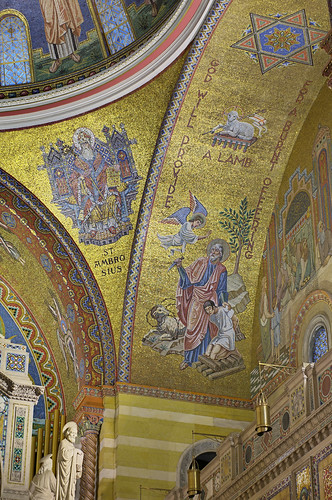
Opposite shows the sacrifice of Abraham, which prefigures the Eucharist, the Christological symbol of the Lamb of God laying the book of seven seals from the Apocalypse, and a six-pointed Star of David, also known as the Star of Creation. Saint Ambrose is on the pendentive.
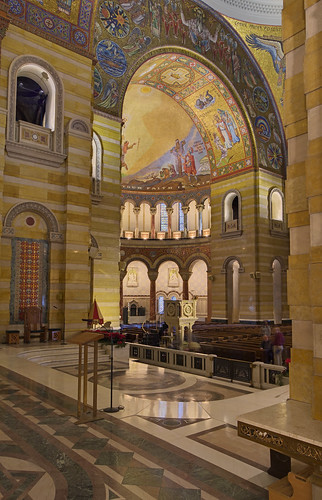
From the side of the sanctuary, showing the presider's chair to the left and the east transept in the background.
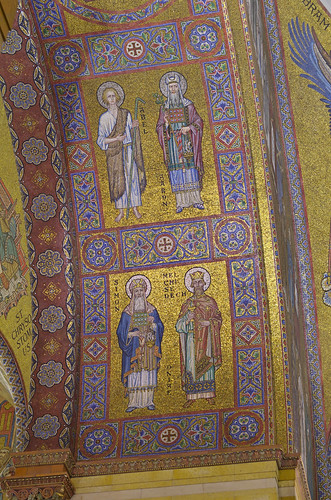
Priestly figures of the Old Testament depicted on the arch in the front of the sanctuary.
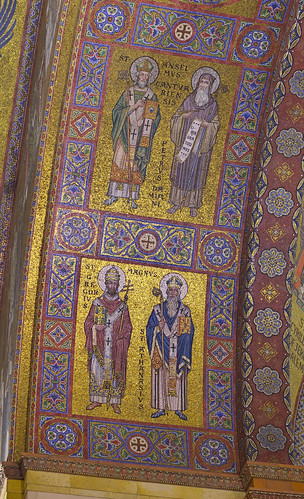
Doctors of the Church.
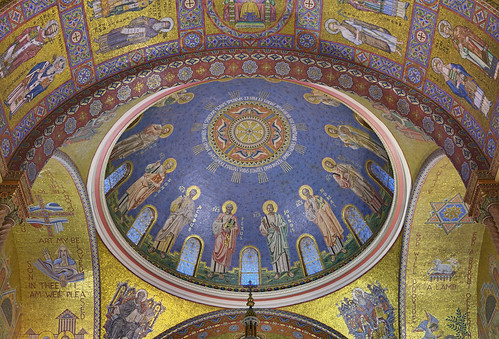
The dome above the sanctuary depicts the twelve Apostles.
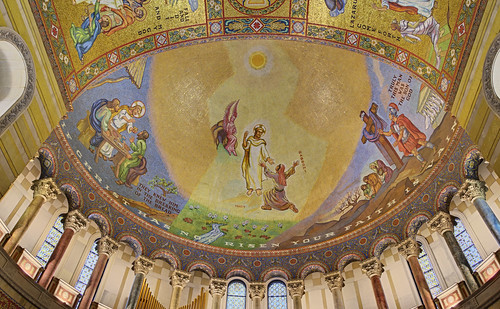
The transept mosaics were completed in 1988, and are of a different style from the other mosaics here. While the sanctuary contains mosaics of a liturgical character, the main body of the nave shows artworks depicting the mysteries of faith, and a vision of future glory.
These mosaics have the theme of the Resurrection. "If Christ has not risen your faith is in vain."
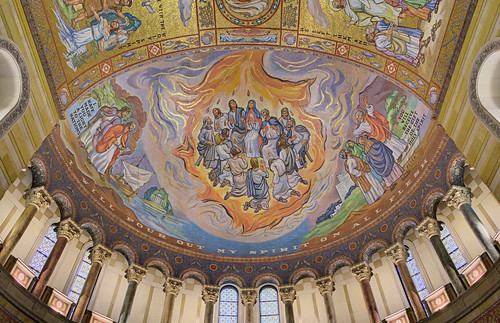
Pentecost mosaic. "I will pour out my spirit on all flesh."
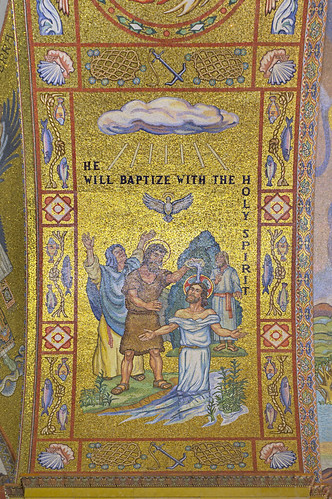
On the arch surrounding the Pentecost mosaic. Shown here is John, baptizing Jesus. Surrounding this are nautical symbols, which are among the most ancient symbols in Christianity.

The Ascension.
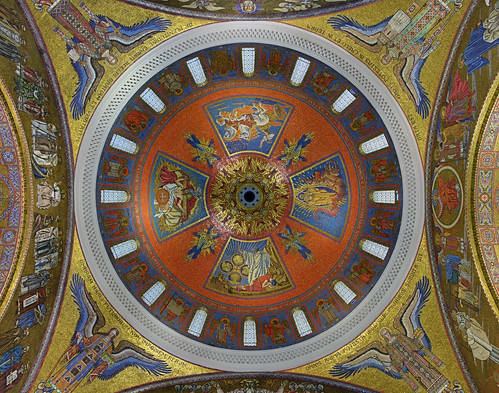
The main dome shows heavenly visions.
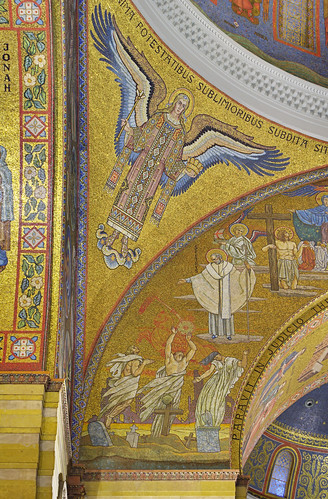
The pendentives under the main dome depict angels. The arch here shows the resurrection of the dead.
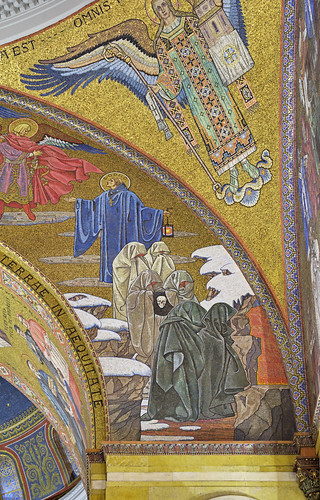
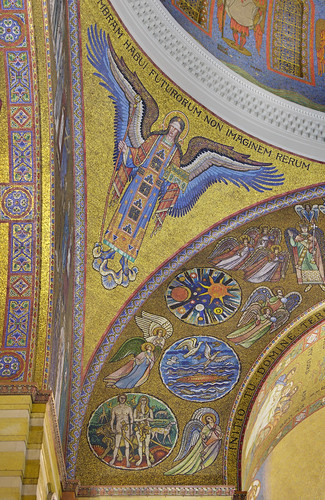
Depiction of Creation.
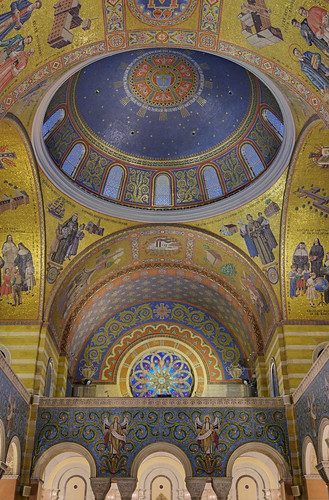
Another dome, in the back of the nave, is surrounded by mosaics depicting the history of the Archdiocese. Note the use of hierarchy: liturgical art is in the sanctuary, eschatological art in the main nave, and historical art in the back. The four side-chapels are used for devotion.
The life of Saint Louis IX, King of France is depicted by mosaics in the narthex. I would think that this art would have been better off being depicted in a side-chapel rather than in the noisy narthex.
Please see the side-bar for many more photos of the cathedral.
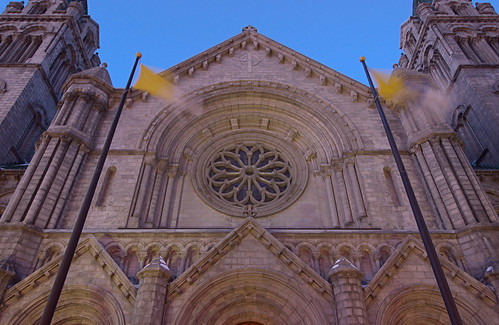 Address:
4431 Lindell Boulevard
Address:
4431 Lindell Boulevard
Saint Louis, Missouri 63108



